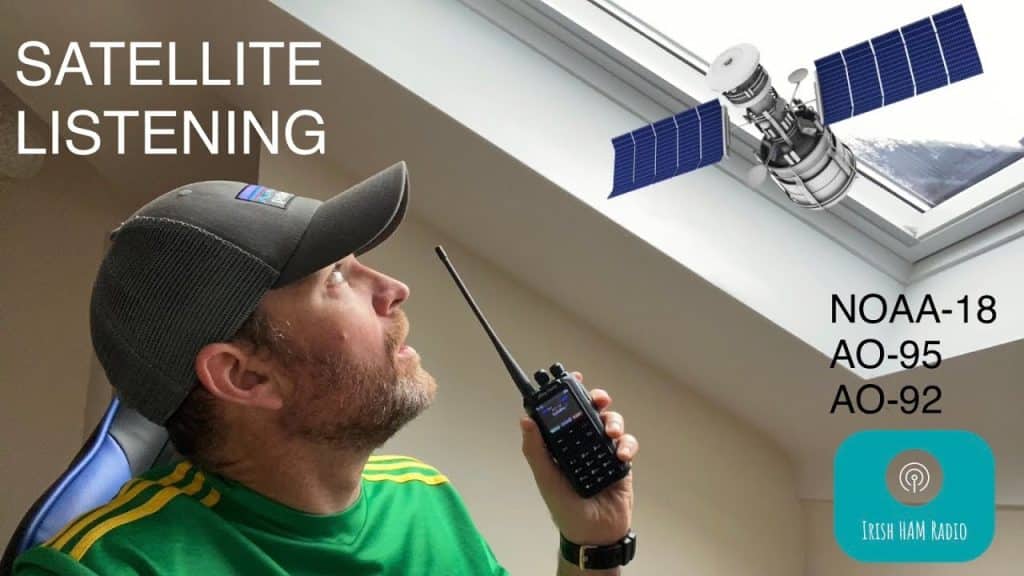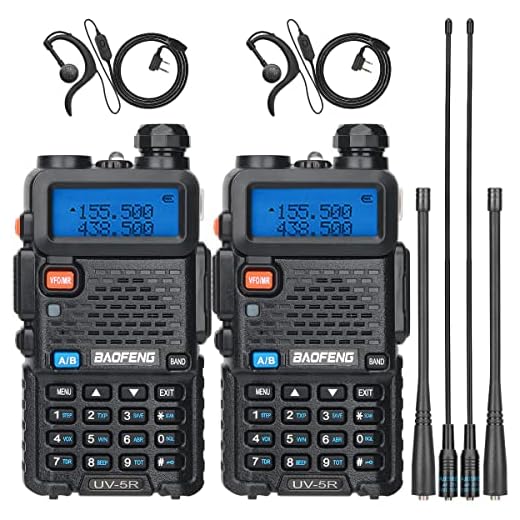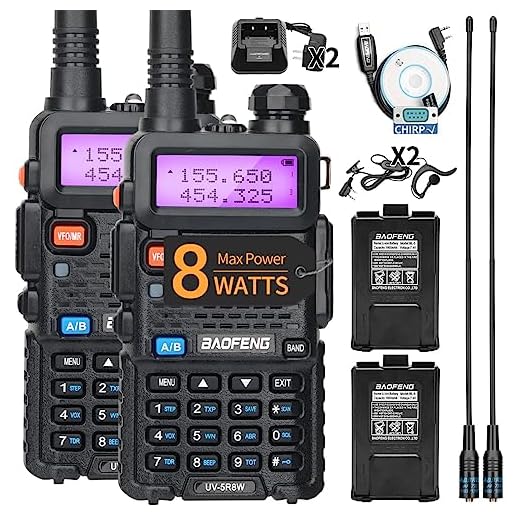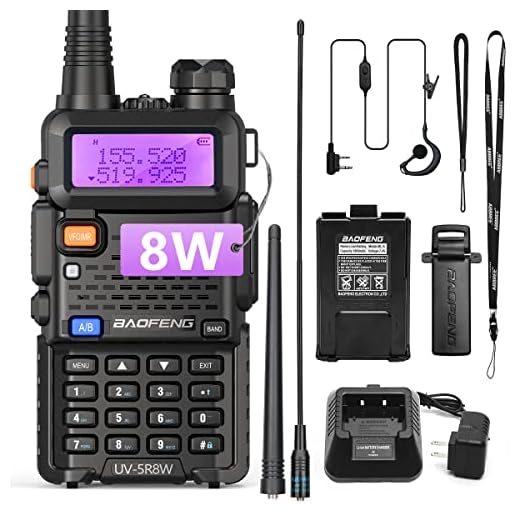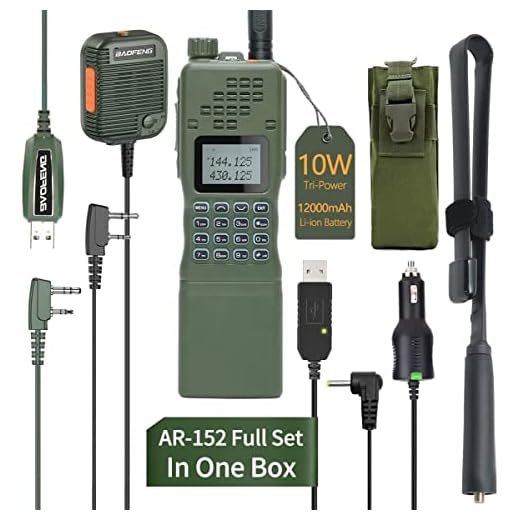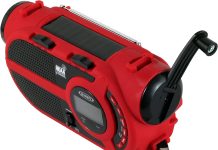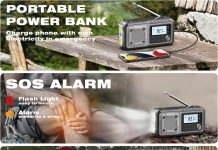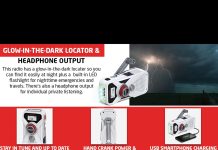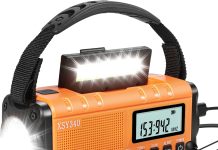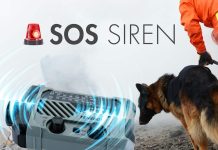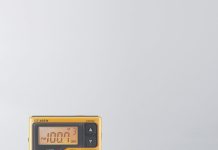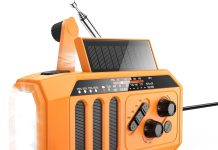Well, let us tell you a little secret: You can absolutely listen to NOAA on your trusty ham radio! If you’ve ever wondered about tuning in to the National Oceanic and Atmospheric Administration, get ready to immerse yourself in a world of weather updates, emergency broadcasts, and all the fascinating information NOAA offers.
In this article, we’ll explore how you can tap into NOAA’s network using your ham radio, opening up possibilities for weather enthusiasts and emergency communication aficionados. So grab your headphones, adjust your frequency, and embark on a journey to unlock the wonders of NOAA on ham radio!
Review contents
Introduction
Welcome to our comprehensive guide on the role of NOAA Weather Radio and Ham Radio in emergency communication. In this article, we will explore the functions and importance of these two communication methods and their frequencies, receivers, and legal considerations. Whether you are a weather enthusiast, emergency responder, or simply curious about emergency communication systems, this article will provide valuable insights.
Understanding NOAA
What is NOAA?
NOAA, the National Oceanic and Atmospheric Administration, is an agency of the United States Department of Commerce. Its primary mission is to provide accurate and up-to-date environmental information to the public and various industries. NOAA gathers weather, climate, ocean, and coasts data and conducts research, monitoring, and forecasting activities.
NOAA Weather Radio
One of the vital services provided by NOAA is the NOAA Weather Radio network. This network operates on specific frequencies and broadcasts weather alerts, forecasts, and other emergency information 24 hours a day, seven days a week. NOAA Weather Radio is a reliable source of weather information, particularly during severe weather events, such as hurricanes, tornadoes, and flash floods.
Role of NOAA in emergency communication
NOAA plays a crucial role in emergency communication by providing timely and accurate weather information to the public, emergency management agencies, and other disaster response and recovery organizations. By broadcasting weather updates, warnings, and watches, NOAA helps keep communities informed and prepared for severe weather conditions. Their broadcasts also provide valuable information for decision-making during emergencies.
This image is the property of i.ytimg.com.
Understanding Ham Radio
What is ham radio?
Ham radio, also known as amateur radio, is a popular hobby and service allowing individuals to communicate using radio waves. Unlike traditional broadcast radio, ham radio is two-way communication, enabling operators to transmit and receive messages. Ham radio operators use designated radio frequencies and follow specific rules and regulations set by the Federal Communications Commission (FCC).
Ham Radio Operators
Ham radio operators, called “hams,” have various interests and capabilities. They participate in various activities, such as talking to other operators locally or worldwide, providing emergency communication support during disasters, experimenting with new technologies, and even engaging in satellite communications. Ham radio is an inclusive hobby, with enthusiasts of all ages and backgrounds coming together to explore the world of radio communication.
Importance of ham radio in emergency communication
During emergencies, traditional communication channels may become overloaded or fail. That’s where ham radio operators step in. They are critical in emergency communication, providing a reliable alternative when other systems are compromised. Ham radio operators are often trained in emergency communication protocols and can quickly mobilize to establish communication links and relay crucial information between affected areas and emergency management agencies.
NOAA Weather Radio Frequencies
VHF vs. UHF frequencies
NOAA Weather Radio primarily operates on two different frequency ranges: Very High Frequency (VHF) and Ultra High Frequency (UHF). VHF frequencies range from 30 to 300 MHz, while UHF frequencies range from 300 to 3000 MHz. VHF and UHF have advantages and limitations, and the choice of frequency depends on various factors, including propagation characteristics and equipment capabilities.
NOAA Weather Radio frequencies
NOAA Weather Radio broadcasts across seven standard frequencies within the VHF band. These frequencies are widely used across the United States and its territories. The seven frequencies are assigned specific codes, such as Channel 1 (162.400 MHz) and Channel 7 (162.550 MHz). By tuning in to the appropriate frequency, listeners can access weather forecasts, alerts, and other emergency information provided by local NOAA Weather Radio stations.
Compatibility with ham radio
Many modern ham radios are capable of receiving NOAA Weather Radio broadcasts. This compatibility lets ham radio operators access weather updates and emergency information directly through their equipment. By incorporating NOAA Weather Radio reception, hams can stay informed about changing weather conditions while pursuing their hobby of radio communication.
This image is the property of i.ytimg.com.
Ham Radio Frequencies
VHF vs. UHF frequencies
Like NOAA Weather Radio, ham radio operates on VHF and UHF frequencies. These frequency bands offer different propagation characteristics, making them suitable for various communication purposes. VHF frequencies are often preferred for local communication because they can travel longer distances, while UHF frequencies excel in urban environments where line-of-sight communication is crucial.
Ham radio bands and frequencies
Ham radio operators can access various frequency bands, each with a specific purpose and usage. These bands are divided into segments and allocated based on different license classes. For example, the two-meter band (144-148 MHz) is popular among ham radio operators for local and regional communication, while the seventy-centimeter band (420-450 MHz) is commonly used for satellite communication.
NOAA Weather Radio Receivers
NOAA Weather Radio receivers
NOAA Weather Radio receivers are specially designed devices that receive broadcasts from NOAA Weather Radio stations. These receivers typically feature specific frequency ranges and have weather alert capabilities, which can automatically activate when severe weather alerts are issued. NOAA Weather Radio receivers are available in various formats, including standalone systems and multipurpose devices like weather alert radios.
Capabilities and features
NOAA Weather Radio receivers offer several essential features to ensure the reliable reception of weather broadcasts. These features may include specific channel settings, automatic alert notifications, battery backup, and even integration with external devices, such as sirens or phone systems, to provide prompt notification of severe weather warnings. Some receivers also include weather-related features like barometric pressure measurements or storm-tracking capabilities.
Compatibility with ham radio receivers
While some standalone NOAA Weather Radio receivers are designed solely for receiving weather broadcasts, many modern ham radio receivers include built-in NOAA Weather Radio capabilities. This integration allows ham radio operators to listen to NOAA broadcasts using their existing ham radio equipment, eliminating the need for separate devices. This feature enhances the convenience and versatility of ham radios, serving as an all-in-one solution for communication and weather monitoring needs.
This image is the property of www.retevis.com.
Ham Radio Receivers
Ham radio receivers
Ham radio receivers, or transceivers, receive and transmit radio signals within the designated ham radio frequency bands. These receivers come in various shapes, sizes, and capabilities, catering to the diverse needs of ham radio operators. Whether you are a beginner or an experienced operator, there is a ham radio receiver suitable for your communication requirements.
Types of ham radio receivers
Ham radio receivers can be classified based on their form factors and capabilities. Portable handheld receivers are compact and lightweight, ideal for casual communication or emergencies. Mobile receivers are designed for vehicle installation and provide higher power output and extended range. Base station receivers are fixed units used in home or office settings, offering more advanced features and higher power levels.
Features and Capabilities
Modern ham radio receivers boast a wide range of features and capabilities. Some standard features include frequency scanning, dual-band operation, digital signal processing, built-in antenna tuners, and voice squelch control. Advanced receivers may also incorporate digital modes and techniques, such as frequency hopping or digital data transmission, enabling more efficient and secure communication. The choice of features depends on the intended usage and operator preferences.
Listening to NOAA on Ham Radio
Using a dual-band radio
Using a dual-band radio is a convenient option for ham radio operators interested in NOAA Weather Radio reception. Dual-band radios support VHF and UHF frequencies, making them compatible with ham radio communication and NOAA weather broadcasts. By selecting the appropriate frequency, hams can switch between local communication and weather monitoring without additional equipment.
Monitoring NOAA Weather Radio frequencies
Operators can manually tune their dual-band radios to specific NOAA Weather Radio frequencies to listen to NOAA Weather Radio broadcasts on a ham radio. These frequencies are predetermined and easily accessible. By monitoring the desired NOAA channel, ham radio operators can receive real-time weather updates and emergency information without relying on separate NOAA Weather Radio receivers.
Receiving NOAA broadcasts on ham radio
Operators can quickly receive NOAA Weather Radio broadcasts when the ham radio is appropriately configured and tuned to the correct NOAA frequency. These broadcasts directly provide critical weather information, alerts, and warnings through the ham radio equipment. Ham radio operators can inform themselves and their communities about severe weather conditions, ensuring timely response and preparedness.
This image is the property of i.ytimg.com.
Legal Considerations
Licensing requirements for ham radio operators
To become a ham radio operator, one must obtain an amateur radio license issued by the FCC. Licensing requirements involve passing specific exams that test the operator’s knowledge of radio operation, regulations, and technical concepts. There are three primary license classes – Technician, General, and Amateur Extra – each granting different privileges and frequency allocations.
Legal restrictions on monitoring NOAA broadcasts
While ham radio operators can receive NOAA Weather Radio broadcasts, it is essential to note the legal restrictions surrounding the use of received information. NOAA Weather Radio broadcasts are for personal use and should not be rebroadcasted, transmitted, or disseminated without proper authorization. It is crucial to respect the copyrights and regulations governing NOAA Weather Radio broadcasts while utilizing them for personal weather monitoring.
Conclusion
Having explored the functionalities, frequencies, receivers, and legal considerations of NOAA Weather Radio and ham radio, we have comprehensively understood these essential communication tools. NOAA Weather Radio is a reliable source of weather information and emergency alerts, while ham radio operators are crucial in providing communication support during emergencies.
By combining the capabilities of ham radios and NOAA Weather Radio, we can stay informed, connected, and prepared for any weather-related event or disaster. Whether you are a weather enthusiast, an aspiring ham radio operator, or interested in emergency communication, exploring these methods is a rewarding and valuable experience. Stay connected, stay informed, and stay safe!
This image is the property of cdn.thewirecutter.com.
BAOFENG UV-5R Ham Radio 8W Dual Band Handheld UV5R Two Way Radio Long Range Rechargeable Walkie Talkies Portable Radio Full Kit,2Pack
$55.69 in stock
Features
- 【Professional Baofeng UV-5R Full Set】High/medium/low power TX selectable,Outpower:8Watts.All You Need Is In One Box!Package contents include:Portable Radio,3800mAh Extended Battery,US Base Charger,USB Charger Cable,Programming Cable,Belt clip,The sling ,Earpiece,User's manual.
- 【FCC Certified】Dual band/Dual display/Dual standby,128 groups of storage channels;50 CTCSS and 104 CDCSS,AUTO Keypad Lock,LED Flashlight;This model has been FCC certified,FCC ID: 2AJGM-UV5R.
- 【Large Capacity 3800mAh Battery&USB Charger】Come with Large Capacity 3800mAh Battery,200% Standby time higher than original,power saving function can extend battery life,Keep you non-stop communication;With USB charging cable, it can support both the base charging and battery USB charging, which is convenient for use in various occasions.
- 【USB Programming Cable】Come with USB Programming Cable,With PL2303 Chip,Drive free,more convenient and durable,can work fine with chirp software,Support Win10/Win11 etc System.If your radio model is not find software,we will help you find software&special firmware for you.
- 【High Quality Headsets】Come with K Port Headset,K head connector: Ear 3.5mm stereo (top pin), Mic 2.5mm stereo (bottom pin),G shape Earpiece and 360°rotatable earplug fit your ear comfortably;Strong PTT button easily to place and long time use,strong iron clip that you can clip anywhere you want.
Baofeng UV-5R Ham Radio Two Way Radio | UV5R Rechargeable | Long Range | Baofeng Portable Walkie Talkies
$39.99 in stock
Features
- 【1】With Function VFO & Memory channels scan,Dual display / Dual standby/ Auto Keypad Lock;FFC ID: 2AJGM-UV5R
- 【2】The Radio is necessary for traveling, survival, hiking, cycling, work, camping, fishing, Emergency Alarm. it is Walkie talkie lover's favorite.
- 【3】Support CHIRP & Keypad Programming:The UV-5R walkie-talkie can directly program the frequency manually, also work fine with chirp software;If your radio model is not find software,we will help you find software & special firmware for you.
- 【4】Package Include: 2 X Portable radio 2 X 1800mAh Li-ion battery 2 X Charger 2 X Belt clip 2 X The sling 2 X Earpiece 2 X User's manual
BAOFENG UV-5R Ham Radio 8W Handheld High Power Dual Band 144-148/420-450Mhz Baofeng Radio Long Range Walkie Talkies with Programming Cable etc(Black+2Pack Full Set)
$50.99 in stock
Features
- 【Professional Baofeng UV-5R Full Set】All You Need Is In One Box!Package contents include:8W Portable Radio ,PL2303 Programming Cable,1800mAh Li-ion Battery(long standby),US Base Charger , Belt clip ,The sling ,Earpiece,User's manual
- 【8Watts High Power Radio】High/ Mid/Low Power,Dual band / Dual display / Dual standby,128 groups of storage channels;50 CTCSS and 104 CDCSS,AUTO Keypad Lock,LED Flashlight;This model has been FCC certified, FCC ID: 2AJGM-UV5R.
- 【Support CHIRP & Keypad Programming】With PL2303 Programming Cable,The walkie-talkie can directly program the frequency manually, also work fine with chirp software; If your radio model is not find software , we will help you find software & special firmware for you.
- 【Suitable For Teamwork】The Radio is necessary for traveling, survival, hiking, cycling, work, camping, fishing, Emergency Alarm.it is Walkie talkie lover's favorite.
BaoFeng UV-5R 8W Ham Radio Handheld UV5R Dual Band Long Range Walkie Talkies Two Way Radio Portable Tri-Power Radio(Black-8W 1Pack)
Features
- 【1】This article is ideal for short-distance communication. It is simple, economical and practical.
- 【2】High/ Mid/Low Power ,Dual band / dual display / dual standby,AUTO Keypad Lock.
- 【3】 FCC ID: 2AJGM-UV5R
- 【4】1800mAh Battery,128 groups of storage channels
- 【5】Worry-free after-sales service:We provide Programmable PC software,We also provide 30 days no reason to Warranty.
Baofeng UV-5R Upgrade Ham Radio UV-21R Dual Band Ham Radio Handheld Long Range Two Way Radio for Adults Rechargeable Walkie Talkies with VOX 999 Channels 771 High Gain Antenna Full Kit
Features
- 【Long Range Professional Walkie Talkie】The communication distance can reach 3-5Mile. Featuring a sturdy casing and anti drop design, your radio can withstand harsh conditions and have a longer lifespan. The Ip54 waterproof function is even more perfect, especially in harsh environments.FCC Certification,FCC ID:2AJGM-UV21
- 【Type-C Rechargeable】The Type-C charging port is designed on the back of the battery, making it convenient for you to charge anytime and anywhere. When you go out, you can charge your walkie talkie on the car, power bank, laptop, or any USB interface device, no longer worrying about battery life issues
- 【Wireless Frequency Copy】Easily decipher the frequency of another ham walkie talkie without the need for computer programming.
- 【High Gian Orange Long Antenna】15.35 inch dual band antenna, suitable for most female ham radios, it can enhance signal and increase communication distance, flexible, easy to bend, lightweight, and convenient to carry
- 【VOX-Free Your Hands&FM Function】When you are busy, you don't have to keep pressing PTT, you just need to transmit information through sound transmission. When you have free time, you can also listen to local radio programs to relax your body and mind.
AR-152 10W Powerful Ham Radio Military Grade Long Range Two Way Radio with 12000mAh Larger Battery,Tactical Antenna,Speaker Mic and USB Charging Cable Full Kits
Features
- ▶【Long Range Communication】Professional Ham Radio,Up to 128 channels.Output : 10W ,High/Mid/Low Tri-Power Switchover,FCC certificated,FCC ID:2AJGM-AR152,The signal waves have the ability to penetrate wood; steel and concrete; giving you better range and performance in urban environments and around buildings
- ▶【Three charging methods】Equipped with 1Pack Wall Charger+Car Charger+USB Charger Cable, Allows you to charge anytime, anywhere, convenient and portable.
- ▶【With 2Pack Tactical Antenna】Equipped with 25cm/9.84inch AR-152 Tactical Antenna+48cm/18.89inch Tactical Antenna ,Connector Type:SMA-Female,Can enhance the signal
- ▶【Programming Cable&Program After-sales Service】With 1Pack Programming Cable,Program your AR-152 two way portable radio with a special firmware from radio shared!And provide technical guidance and after-sales service
- ▶【Hands-free】Equipped with Speaker Micphone,keep your hands free with this radio
BAOFENG BF-F8HP (UV-5R 3rd Gen) 8-Watt Dual Band Two-Way Radio (136-174MHz VHF & 400-520MHz UHF) Includes Full Kit with Large Battery
Features
- Upgrades from our Previous Generation UV-5R: Twice the Output Power (8 watts up from 4 watts output), New Hardened Durable Radio Shell, 30% Larger Battery, V-85 High Gain Antenna (Twice the Antenna Performance), USA Support + In-depth User Guide Included; A PC03 FTDI Programming Cable is Recommended for Easier PC Programming
- High / Med / Low Power Settings (8W, 4W, 1W); Frequency Range: VHF: 136-174 MHz(Rx/Tx). UHF: 400-520 MHz(Rx/Tx); Broad (Wide) / Narrowband (Narrow) Selectable
- The BF-F8HP was designed in the USA and because not everyone is a radio-expert we really wanted to focus on providing an easier user experience! That starts with the new in-depth manual that guides you through the capabilities and customization of the BF-F8HP. On top of that the BF-F8HP also includes exclusive concierge customer help and warranty support. This concierge service is only available on select BaoFeng models such as the BF-F8HP, UV-82HP, and UV-5X3
- Kit Includes: BF-F8HP, 2100mAh Battery, V-85 Dual Band Antenna, CH-5 Charger, CH-5 110V Adapter, Earpiece Kit, Wrist Strap, Belt Clip, User Manual
- BTECH is proud to be in the USA, which allows you to have the best available local support for any issue that may arise. BTECH only engineers and develops radio products. That brand focus allows you to have the best available radios and accessories with the most features, with real USA warranty and support.



